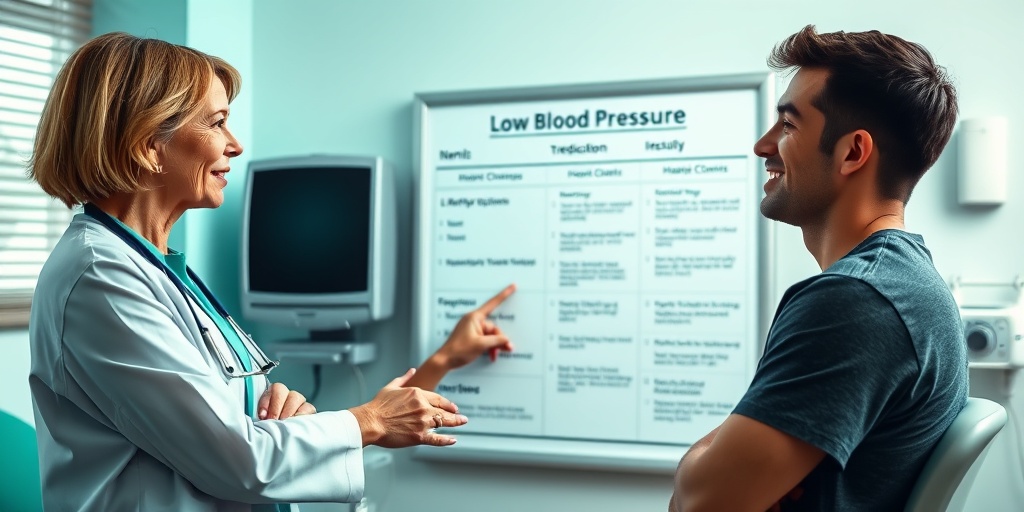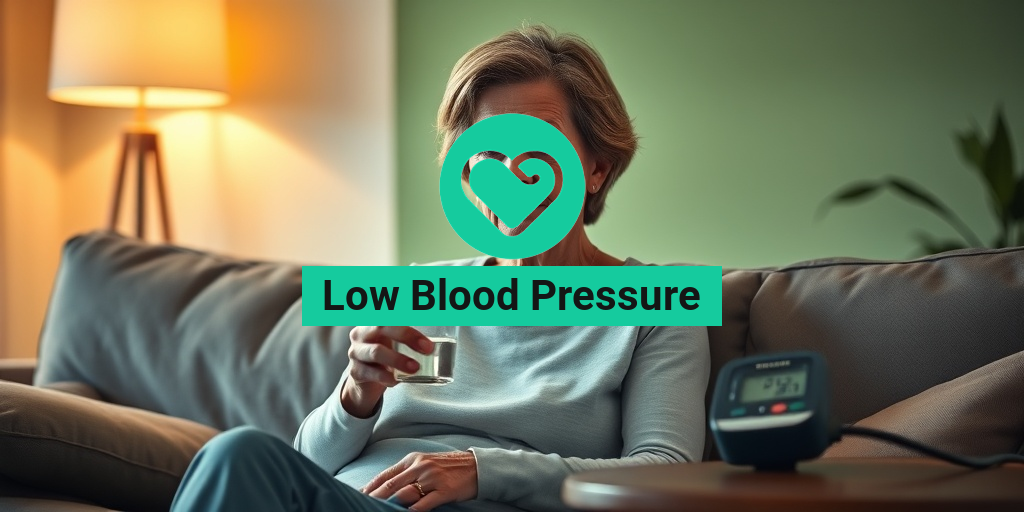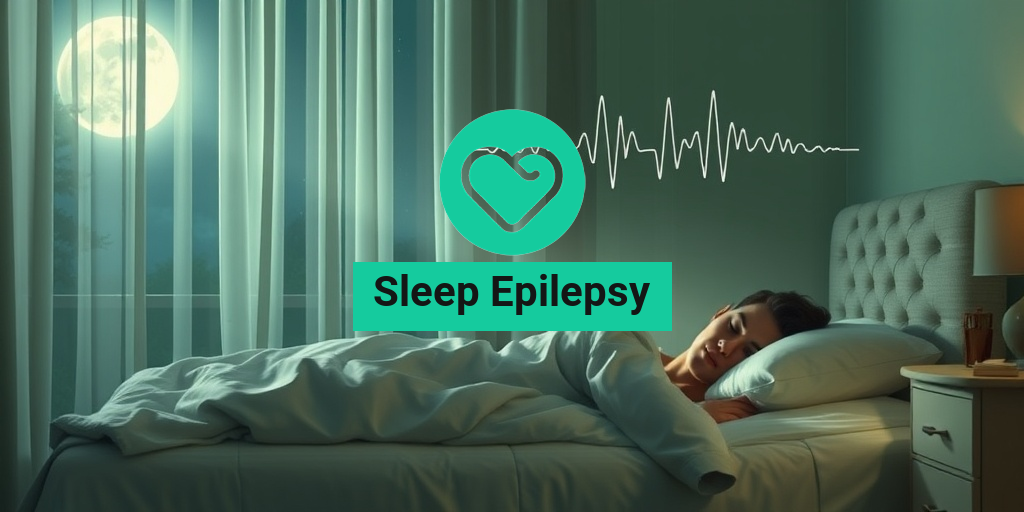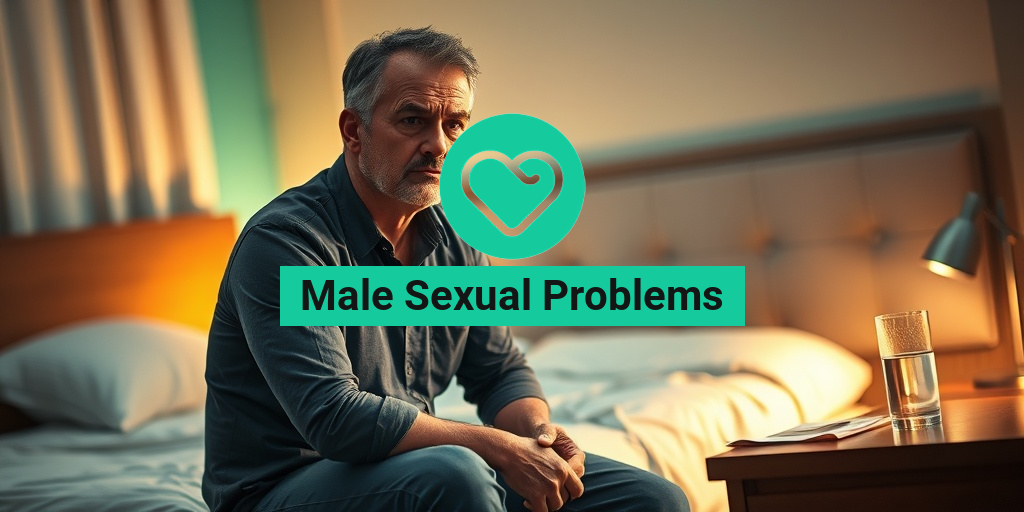What Is Low Blood Pressure?
Low blood pressure, medically known as hypotension, occurs when the blood pressure in your arteries is lower than normal. While there is no universally accepted definition, a reading below 90/60 mmHg is generally considered low. Blood pressure is measured in millimeters of mercury (mmHg) and is expressed as two numbers: the systolic pressure (the first number) measures the pressure in your arteries when your heart beats, while the diastolic pressure (the second number) measures the pressure when your heart is at rest between beats.
For many people, low blood pressure is not a cause for concern and may even be a sign of good health. However, for others, it can lead to symptoms that affect daily life. Understanding the nuances of low blood pressure is essential, especially if you experience any related symptoms.
Understanding Blood Pressure Ranges
Blood pressure is categorized into several ranges:
- Normal: Less than 120/80 mmHg
- Elevated: 120-129/less than 80 mmHg
- Hypertension Stage 1: 130-139/80-89 mmHg
- Hypertension Stage 2: 140 or higher/90 or higher mmHg
- Low Blood Pressure: Less than 90/60 mmHg
Causes of Low Blood Pressure
Several factors can contribute to low blood pressure, including:
- Dehydration: When your body loses more water than it takes in, it can lead to low blood volume, resulting in lower blood pressure.
- Heart Problems: Certain heart conditions can affect your ability to pump blood effectively, leading to low blood pressure.
- Endocrine Issues: Disorders of the adrenal glands, such as Addison’s disease, can cause low blood pressure.
- Severe Infection: Sepsis, a severe infection that spreads throughout the body, can lead to dangerously low blood pressure.
- Blood Loss: Losing a significant amount of blood, whether from an injury or internal bleeding, can reduce blood volume and lower blood pressure.
Low Blood Pressure Symptoms
While some individuals with low blood pressure may not experience any symptoms, others may notice various signs that can impact their quality of life. Recognizing these symptoms is crucial for timely intervention.
Common Symptoms of Low Blood Pressure
Here are some common symptoms associated with low blood pressure:
- Dizziness or Lightheadedness: This is one of the most common symptoms, especially when standing up quickly.
- Fainting: In severe cases, low blood pressure can lead to fainting spells.
- Fatigue: Persistent low energy levels can be a sign of low blood pressure.
- Nausea: Some individuals may experience feelings of nausea or even vomiting.
- Blurred Vision: Sudden drops in blood pressure can cause temporary vision disturbances.
When to Seek Medical Attention
If you experience severe symptoms such as fainting, confusion, or a rapid heartbeat, it’s essential to seek medical attention immediately. These could be signs of a more serious underlying condition. Additionally, if you are pregnant and experience low blood pressure, it’s crucial to consult with your healthcare provider to ensure both your health and the health of your baby.
For more information on managing low blood pressure and understanding its implications, consider visiting Yesil Health AI, a valuable resource for evidence-based health answers.
In conclusion, while low blood pressure can be a benign condition for some, it can pose challenges for others. Being aware of the symptoms and causes can empower you to take proactive steps towards maintaining your health. 🌟

Causes of Low Blood Pressure
Low blood pressure, also known as hypotension, can occur for a variety of reasons. Understanding the underlying causes is crucial for managing this condition effectively. Here are some common causes of low blood pressure:
1. Dehydration
When your body loses more water than it takes in, it can lead to dehydration, which reduces blood volume and, consequently, blood pressure. This can happen due to:
- Excessive sweating
- Vomiting or diarrhea
- Fever
2. Heart Problems
Several heart conditions can lead to low blood pressure, including:
- Bradycardia: An abnormally slow heart rate can prevent adequate blood circulation.
- Heart attack: Damage to the heart muscle can impair its ability to pump blood effectively.
- Heart valve issues: Problems with heart valves can disrupt normal blood flow.
3. Endocrine Disorders
Hormonal imbalances can significantly affect blood pressure. Conditions such as:
- Addison’s disease: This disorder affects the adrenal glands, leading to insufficient production of hormones that regulate blood pressure.
- Thyroid problems: Both hypothyroidism and hyperthyroidism can influence blood pressure levels.
4. Blood Loss
Significant blood loss from an injury or internal bleeding reduces the amount of blood in your body, leading to a drop in blood pressure. This can be particularly dangerous and requires immediate medical attention.
5. Nutritional Deficiencies
A lack of essential nutrients, particularly vitamin B12 and folate, can prevent your body from producing enough red blood cells, leading to low blood pressure.
6. Medications
Certain medications can cause low blood pressure as a side effect. These include:
- Diuretics: Often used to treat high blood pressure, they can lead to dehydration.
- Beta-blockers: Commonly prescribed for heart conditions, they can lower heart rate and blood pressure.
- Antidepressants: Some can cause blood pressure to drop, especially when you first start taking them.
7. Pregnancy
During pregnancy, a woman’s body undergoes significant changes, including an increase in blood volume. However, blood pressure can drop due to hormonal changes and the growing fetus putting pressure on blood vessels.
Risk Factors for Low Blood Pressure
While anyone can experience low blood pressure, certain factors can increase your risk. Understanding these risk factors can help you take preventive measures. Here are some key risk factors:
1. Age
As you age, your blood vessels may become less elastic, which can lead to fluctuations in blood pressure. Older adults are more likely to experience low blood pressure, especially when standing up quickly.
2. Medical Conditions
Individuals with certain medical conditions are at a higher risk for low blood pressure, including:
- Diabetes: This condition can affect the body’s ability to regulate blood pressure.
- Neurological disorders: Conditions like Parkinson’s disease can disrupt the autonomic nervous system, leading to low blood pressure.
3. Medications
As mentioned earlier, some medications can lower blood pressure. If you are taking medications for other health issues, it’s essential to discuss potential side effects with your healthcare provider.
4. Dehydration
Individuals who do not drink enough fluids, especially in hot weather or during illness, are at a higher risk of dehydration and, consequently, low blood pressure.
5. Lifestyle Factors
Certain lifestyle choices can contribute to low blood pressure, including:
- Prolonged bed rest: Staying in bed for extended periods can lead to a drop in blood pressure.
- Excessive alcohol consumption: Drinking too much alcohol can lead to dehydration and lower blood pressure.
6. Pregnancy
Pregnant women often experience low blood pressure due to hormonal changes and increased blood volume. It’s essential for expectant mothers to monitor their blood pressure regularly.
Understanding the causes and risk factors of low blood pressure can empower you to take proactive steps in managing your health. If you experience symptoms of low blood pressure, such as dizziness or fainting, consult a healthcare professional for guidance. 🌟

Diagnosing Low Blood Pressure
Low blood pressure, or hypotension, can often go unnoticed, especially if symptoms are mild or sporadic. However, understanding how it is diagnosed is crucial for effective management. Here’s what you need to know about the diagnostic process.
Understanding Blood Pressure Readings
Blood pressure is measured in millimeters of mercury (mmHg) and is expressed with two numbers: systolic (the top number) and diastolic (the bottom number). A typical reading is around 120/80 mmHg. Low blood pressure is generally considered to be below 90/60 mmHg.
Common Symptoms of Low Blood Pressure
Before diagnosing low blood pressure, healthcare providers will often look for symptoms that may indicate the condition. Common symptoms include:
- Dizziness or lightheadedness
- Fainting
- Blurred vision
- Nausea
- Fatigue
If you experience these symptoms, especially after standing up quickly or after prolonged sitting, it’s essential to consult a healthcare professional.
Diagnostic Tests
To diagnose low blood pressure, your doctor may perform several tests, including:
- Blood Pressure Measurement: This is the primary method. Your doctor will take multiple readings at different times to confirm low blood pressure.
- Blood Tests: These can help identify underlying conditions such as anemia or dehydration.
- Electrocardiogram (ECG): This test checks for heart problems that may contribute to low blood pressure.
- Echocardiogram: An ultrasound of the heart can reveal structural issues affecting blood flow.
In some cases, your doctor may also recommend a tilt table test to see how your blood pressure responds to changes in position.
Low Blood Pressure Treatment Options
Once diagnosed, managing low blood pressure is essential to alleviate symptoms and improve quality of life. Treatment options can vary based on the underlying cause and severity of the condition.
Lifestyle Changes
For many individuals, simple lifestyle adjustments can significantly improve symptoms of low blood pressure:
- Increase Fluid Intake: Staying hydrated is crucial. Drinking more water can help increase blood volume and prevent dehydration.
- Eat Small, Frequent Meals: Large meals can lead to a drop in blood pressure. Eating smaller meals throughout the day can help maintain stable levels.
- Wear Compression Stockings: These can help improve circulation and prevent blood from pooling in the legs.
- Avoid Alcohol: Alcohol can lower blood pressure further, so it’s best to limit or avoid it.
Medications
If lifestyle changes are insufficient, your doctor may prescribe medications to help manage low blood pressure. Some common options include:
- Fludrocortisone: This medication helps your body retain sodium, which can increase blood volume and blood pressure.
- Midodrine: This drug works by constricting blood vessels, which can raise blood pressure.
Always consult with your healthcare provider before starting any medication to ensure it’s appropriate for your specific situation.
Monitoring and Follow-Up
Regular monitoring of blood pressure is essential for those with low blood pressure. Your doctor may recommend follow-up appointments to track your condition and adjust treatment as necessary. Keeping a blood pressure diary can also be beneficial in identifying patterns and triggers.
In conclusion, diagnosing and treating low blood pressure involves a comprehensive approach that includes understanding symptoms, conducting tests, and implementing lifestyle changes or medications. If you suspect you have low blood pressure, don’t hesitate to reach out to a healthcare professional for guidance. 🌟

Home Remedies for Low Blood Pressure
Low blood pressure, or hypotension, can leave you feeling dizzy, fatigued, and even faint. While it’s essential to consult a healthcare professional for persistent issues, there are several home remedies that may help manage low blood pressure effectively. Here are some natural approaches you can consider:
1. Stay Hydrated
Dehydration can lead to low blood pressure, so it’s crucial to drink plenty of fluids. Aim for at least 8-10 glasses of water daily. You can also include electrolyte-rich drinks like coconut water or sports drinks to help maintain your blood volume.
2. Increase Salt Intake
Salt can raise blood pressure, so adding a little more to your diet might be beneficial. However, consult your doctor before making significant changes, especially if you have other health conditions. Foods like pickles, olives, and salted nuts can be tasty ways to increase your sodium intake.
3. Eat Small, Frequent Meals
Large meals can cause a drop in blood pressure, especially after eating. Instead, try consuming smaller, more frequent meals throughout the day. This approach can help maintain stable blood pressure levels and prevent post-meal dizziness.
4. Wear Compression Stockings
Compression stockings can help improve circulation and prevent blood from pooling in your legs, which can lead to low blood pressure. These stockings are especially useful if you experience symptoms when standing for long periods.
5. Herbal Remedies
Some herbs may help manage low blood pressure. For instance:
- Licorice Root: This herb can help increase blood pressure by affecting cortisol levels.
- Ginseng: Known for its adaptogenic properties, ginseng may help improve blood circulation.
Always consult with a healthcare provider before starting any herbal supplements, as they can interact with medications.
6. Caffeine Boost
A moderate amount of caffeine can temporarily raise blood pressure. Consider enjoying a cup of coffee or tea if you’re feeling particularly low. However, be cautious with caffeine intake, as excessive consumption can lead to other health issues.
7. Lifestyle Changes
Incorporating regular exercise into your routine can help improve circulation and overall cardiovascular health. Activities like walking, swimming, or yoga can be beneficial. Additionally, avoid sudden changes in posture, such as standing up quickly, which can trigger symptoms of low blood pressure.
When to Seek Medical Help
While home remedies can be effective for managing low blood pressure, there are times when it’s crucial to seek medical attention. Here are some signs that indicate you should consult a healthcare professional:
1. Persistent Symptoms
If you experience symptoms like dizziness, fainting, or fatigue that do not improve with home remedies, it’s essential to see a doctor. Persistent low blood pressure can indicate underlying health issues that need to be addressed.
2. Severe Symptoms
Seek immediate medical help if you experience severe symptoms such as:
- Confusion or disorientation
- Rapid or shallow breathing
- Weak or rapid pulse
- Cold, clammy skin
These symptoms may indicate a more serious condition, such as shock, which requires urgent care.
3. Pregnancy-Related Concerns
Low blood pressure during pregnancy is common, but if you experience significant drops or symptoms, consult your healthcare provider. They can help determine if any interventions are necessary to ensure both your health and the health of your baby.
4. Medication Side Effects
If you suspect that your low blood pressure is a side effect of medication, do not stop taking it without consulting your doctor. They can help adjust your dosage or suggest alternatives.
In summary, while there are several effective home remedies for low blood pressure, it’s essential to be aware of when to seek medical help. Monitoring your symptoms and maintaining open communication with your healthcare provider can help you manage your condition effectively. 🌟

Frequently Asked Questions about Low Blood Pressure
What is considered low blood pressure?
Low blood pressure, also known as hypotension, is generally defined as a blood pressure reading below 90/60 mmHg. However, what is considered low can vary from person to person.
What are the common symptoms of low blood pressure?
Individuals with low blood pressure may experience a variety of symptoms, including:
- Dizziness or lightheadedness
- Fainting
- Blurred vision
- Nausea
- Fatigue
What should I do if I have low blood pressure?
If you experience symptoms of low blood pressure, consider the following steps:
- Lie down and elevate your legs to improve blood flow.
- Drink water or fluids with electrolytes to stay hydrated.
- Eat small, frequent meals to avoid drops in blood pressure.
What causes low blood pressure?
There are several potential causes of low blood pressure, including:
- Dehydration
- Heart problems
- Endocrine disorders
- Severe infection (septicemia)
- Blood loss
Is low blood pressure common during pregnancy?
Yes, low blood pressure during pregnancy is quite common, especially in the first and second trimesters. Hormonal changes and increased blood volume can contribute to this condition.
How does low blood pressure vary by age?
Low blood pressure by age can differ significantly. Younger individuals may experience low blood pressure due to various factors, while older adults may have different underlying health issues affecting their blood pressure.
Can low blood pressure cause a high heart rate?
Yes, low blood pressure high heart rate can occur as the body tries to compensate for low blood flow. This can lead to an increased heart rate as the heart works harder to maintain adequate circulation.
Where can I find a low blood pressure chart?
A low blood pressure chart can be found in medical resources or online health websites. These charts typically provide ranges for blood pressure readings and can help you understand what is considered low for your age and health status.




